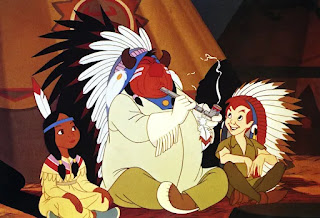Tuesday, February 21, 2023
Beverly Daniel Tatum's Why Are All the Black Kids Sitting Together in the Cafeteria?
Beverly Daniel Tatum’s Why Are All the Black Kids Sitting Together in the Cafeteria? And Other Conversations About Race proposes the argument that everyone, by virtue of living in a society built upon prejudice, harbors prejudice within them through no intent or true fault of their own. This is enforced through the segregation between racial groups that prevents people (mostly prominently, white people) from having an authentic understanding of the culture and people of other racial groups. This has been perpetuated through systematic oppression designed to keep people of color out of white neighborhoods and social classes for centuries. As a result, white people are led to draw their expectations of people of color through their portrayals in the media they consume. An example of this Tatum provides in his writing is that of preschoolers tasked to create a drawing of Native Americans. The preschoolers created drawings of men and women wearing feathers and face paint, and wielding tomahawks. Many were portrayed as aggressive. Tatum clarifies that this isn’t an attempt to vilify preschoolers, or label them as prejudice, but it’s a clear indicator of how early on-set the foundations of prejudice are.
Tatum asserts that if we are to combat this, white people must become conscious of and opposing to the systematic oppression maintaining the segregation of this country. He acknowledges that one of the biggest hurdles in this is convincing white people, who do not witness the alternative to their own privilege due to the very segregation in question, that there is still racism and racial issues in the modern day. To combat this, Tatum pushes for education of racism, such as in the class they lead, or the class we are currently taking. This is supported by the example of preschoolers drawing stereotypes of Native Americans: when asked, many of the students cited Disney's Peter Pan as their basis for what a Native American is like.
Personally, I feel that this introduction to how systematic racism works and permeates is the most accessible to white people that we have encountered thus far. The preschooler example is handled in a way that allows defensiveness at the mention of race to be put aside, but is still focusing on a subject as shocking to us as preschoolers being prejudiced that it allows us to properly understand the weight of what is being discussed.
Additionally, I believe the assertion of the biggest challenge in fighting systematic oppression is convincing those benefiting from it that it’s a problem that exists is an understated one. We often see discussions of race in current day media, but very rarely is it portrayed in a way that allows understanding by those not experiencing or witnessing it. It’s an important part of eliciting change in these systems that is often overlooked or unacknowledged, and I appreciate that a piece like this brings light to it in such a meaningful and effective way.
Hyperlink: https://cognitiveresearchjournal.springeropen.com/articles/10.1186/s41235-021-00349-3
Subscribe to:
Post Comments (Atom)
Blog Post #10 Healing Centered Engagement Argument
The ways Healing Centered Engagement helps to overcome trauma. In Shawn Grinwright’s Healing Centered Engagement , the argument is presented...

-
Literacy With An Attitude by Patrick J. Finn In Vanessa’s blog post discussing quotes of particular interest from Patrick J. Finn’...
-
Jonathan Kozol's Amazing Grace , the subject of today's analysis. During my reading of Jonathan Kozol’s Amazing Grace , ...
-
Looking back on everything that we have studied and discussed over the course of the past semester, the things that I find continuously stic...




I agree with this author's point of view when it comes to teaching racism in every class to rid us of our subsconsciousness of racism.
ReplyDeleteI like how you explained your thoughts clearly
ReplyDeleteI like the pint you made that white people must become aware of their privilege in order to combat it
ReplyDeleteSounds a lot like the first Johnson text we read, no? ;)
ReplyDeleteThe example of 'Peter Pan' and the Native Americans also display how stereotypical the media can be, and that can easily help to shape the minds of the youth.
ReplyDelete